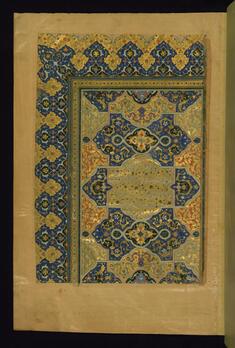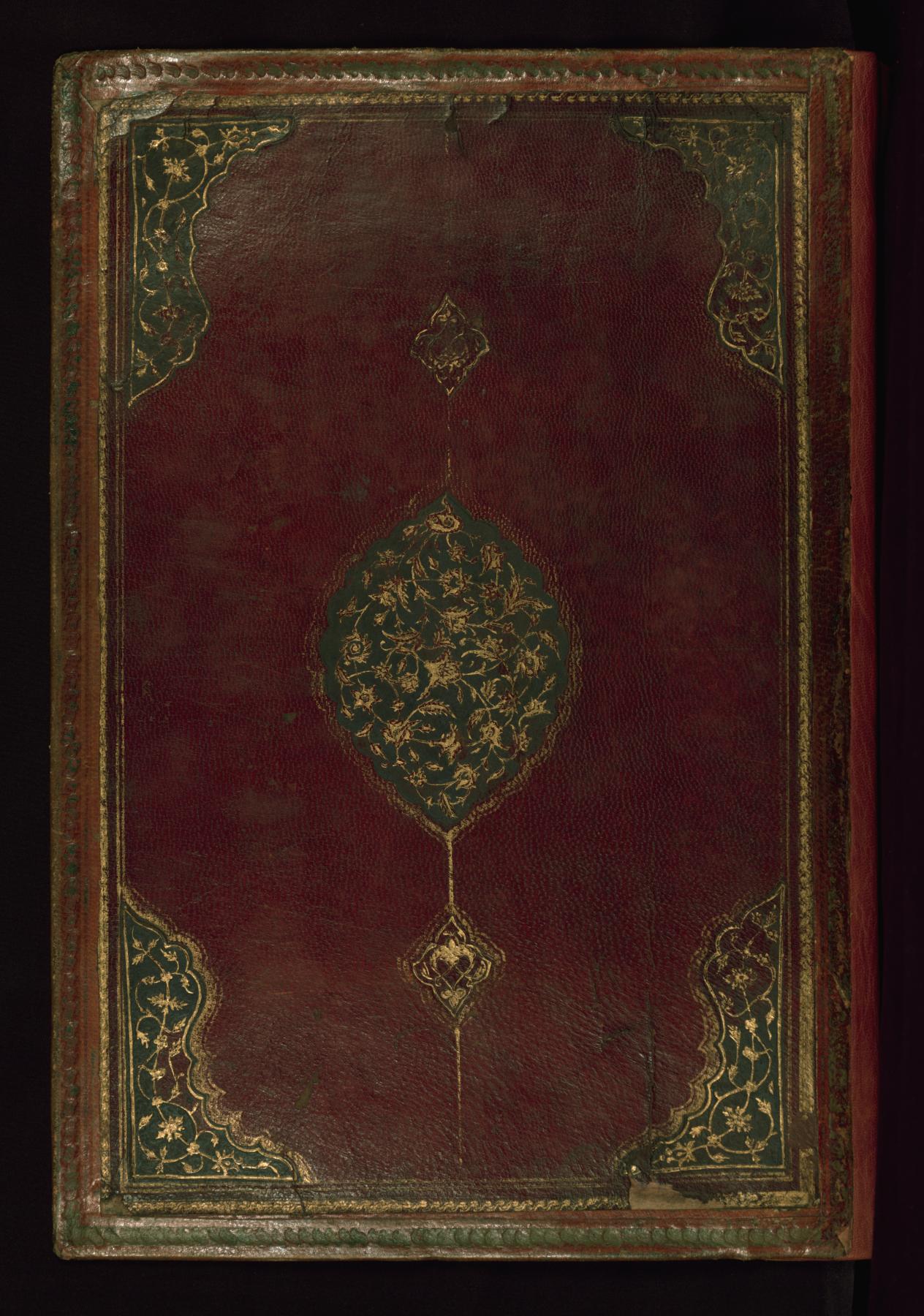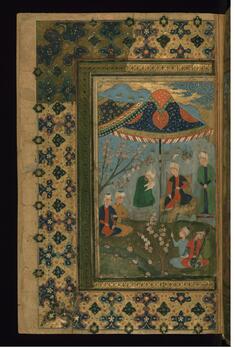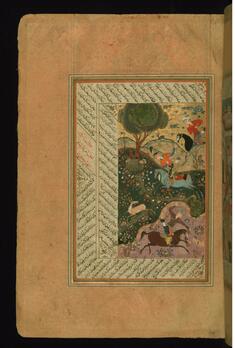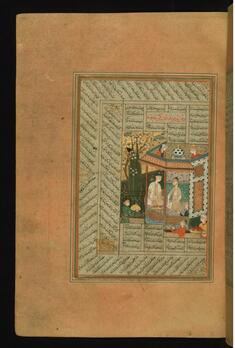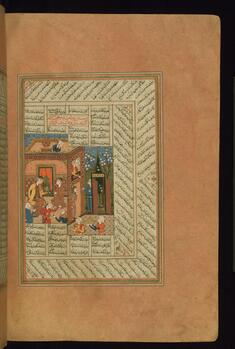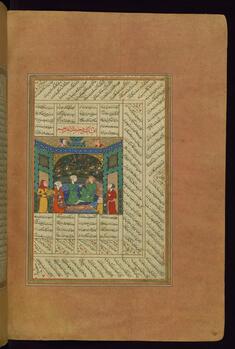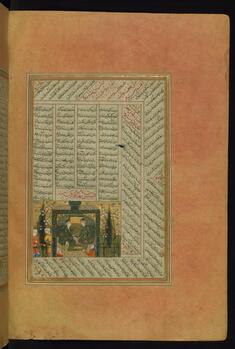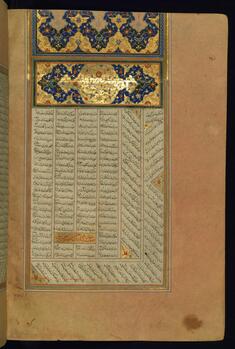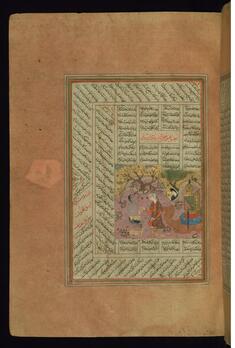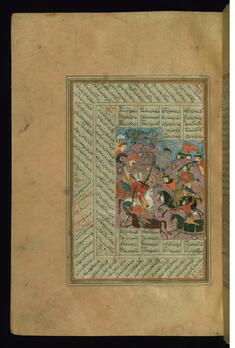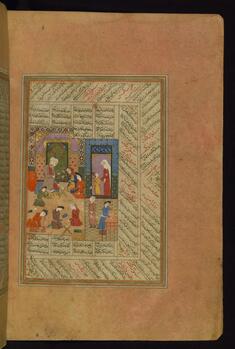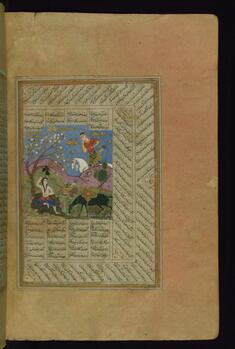Three Collections of Poetry
(Manuscripts and Rare Books, Islamic World , Islamic Manuscripts)
Walters manuscript W.657 is an illustrated and illuminated composite volume of three poetic texts: the Khamsah (quintet) of Nizami Ganjavi (died 605 AH/AD 1209), the Khamsah (quintet) of Amir Khusraw Dihlavi (died 725 AH/AD 1325), and the Timurnamah (Epic of Timur) by 'Abd Allah Hatifi (died 927 AH/AD 1520), also known as the Zafarnamah. The texts are written in black Naskh script, with titles, section headings, and incidentals in white or red Tawqi'/Riqa' script. It was produced in the 10th century AH/AD 16th, in either India or Safavid Iran. The binding is not original to the manuscript. According to a note on front flyleaf iia, the codex was re-bound and restored by a bookbinder of Tabriz, Khwand Mulla Mahdi Sahhaf-i Tabrizi in 1295 AH/AD1878.
Provenance
Provenance (from the French provenir, 'to come from/forth') is the chronology of the ownership, custody, or location of a historical object. Learn more about provenance at the Walters.
Mundir [date and mode of acquisition unknown] [seal impression with motton on fol. 280b]; Khwand Mulla Mahdi Sahhaf-i Tabrizi, Tabriz, 1295 AH/AD 1878 [mode of acquisition unknown] [note regarding re-binding and restoration of this volume by the bookbinder on front flyleaf iia]; Henry Walters, Baltimore [date and mode of acquisition unknown]; Walters Art Museum, 1931, by bequest.
Geographies
India
(Place of Origin)
Iran (Place of Origin)
Measurements
Folio H: 11 x W: 7 1/2 in. (28 x 19 cm)
Credit Line
Acquired by Henry Walters
Location in Museum
Not on view
Accession Number
In libraries, galleries, museums, and archives, an accession number is a unique identifier assigned to each object in the collection.
In libraries, galleries, museums, and archives, an accession number is a unique identifier assigned to each object in the collection.
W.657
Do you have additional information?
Related Objects
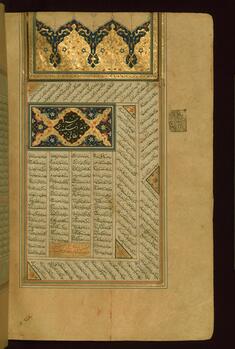
Incipit with Illuminated Headpiece and Titlepiece

Alexander the Great (Iskandar) Being Handed a Letter that Describes a Dangerous Passage Through the Mountains
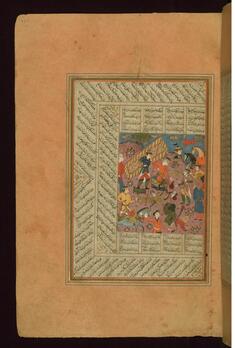
Alexander the Great (Iskandar) Fighting the Zanghis (Ethiopians)

Incipit with Illuminated Headpiece and Titlepiece
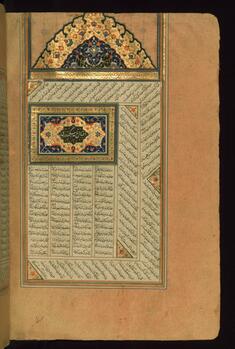
Incipit with Illuminated Headpiece and Titlepiece
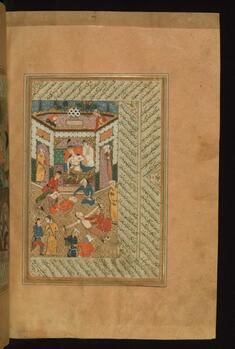
Bahram Gur Watching Justice Being Served to a Man and a Woman

King Enthroned in a Landscape Receiving Gifts
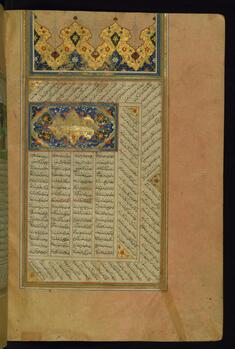
Incipit with Illuminated Headpiece and Titlepiece

Incipit with Illuminated Headpiece and Titlepiece
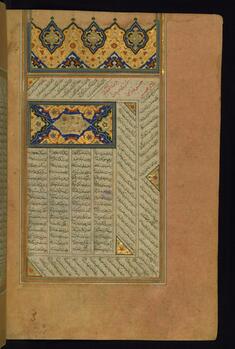
Incipit with Illuminated Headpiece and Titlepiece

Illustrated Finispiece with Three Men Praying Near a Stream
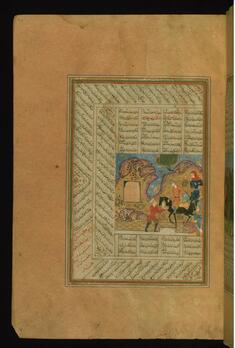
Shirin on Horseback Giving a Drink to Farhad
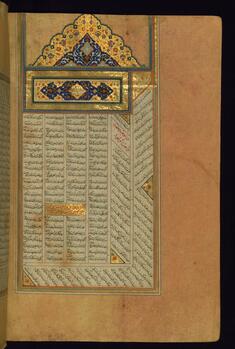
Incipit with Illuminated Headpiece and Titlepiece

Incipit with Illuminated Headpiece and Titlepiece

An Old Woman Implores Sultan Sanjar for Help
